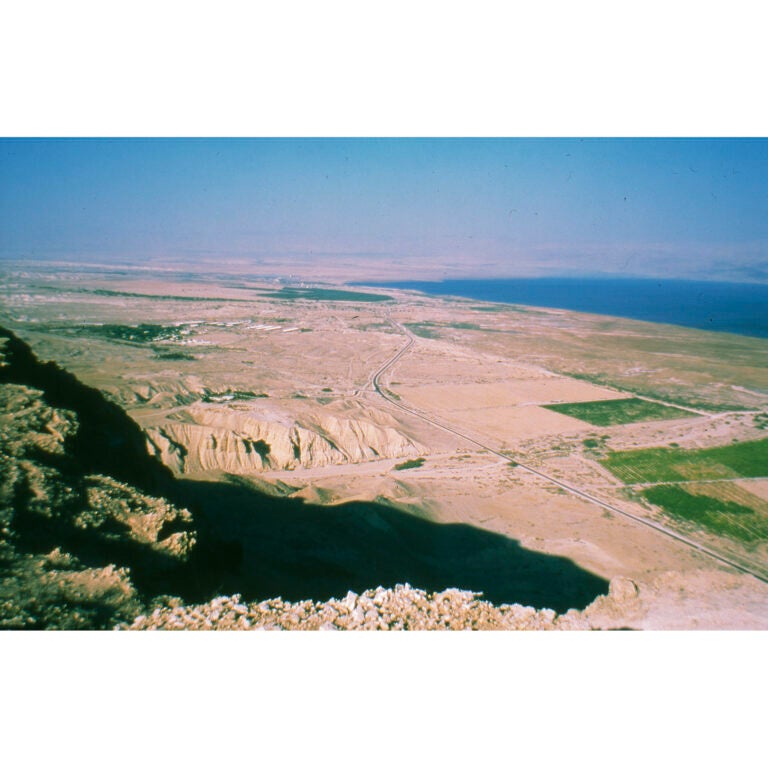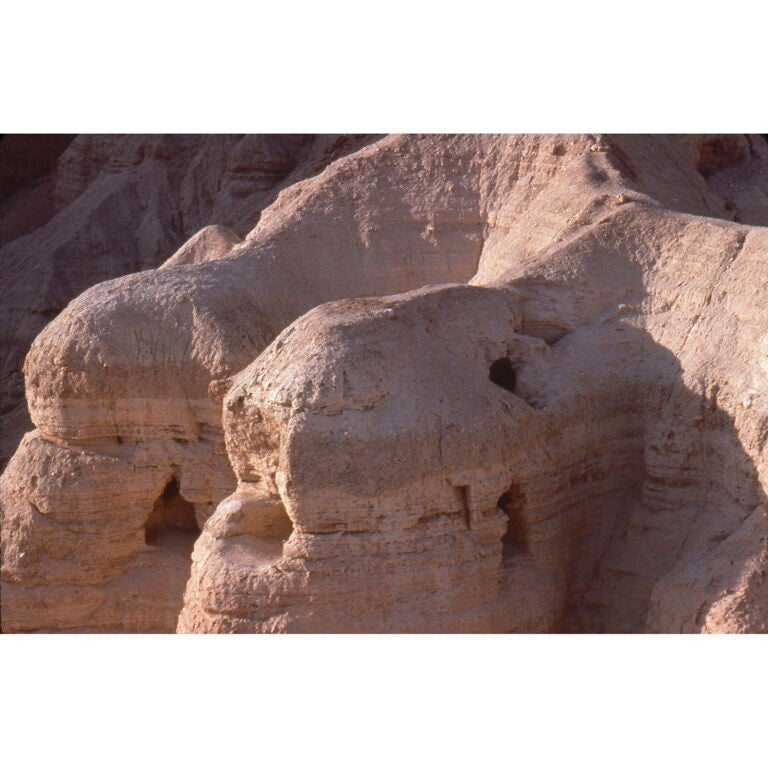The Qumran Site and the Dead Sea
In the spring of 1947 Bedouin goat-herds, searching the cliffs along the Dead Sea for a lost goat (or for treasure, depending on who is telling the story), came upon a cave containing jars filled with manuscripts. That find caused a sensation when it was released to the world, and continues to fascinate the scholarly community and the public to this day. The first discoveries came to the attention of scholars in 1948 when seven of the scrolls were sold by the Bedouin to a cobbler and antiquities dealer called Kando. He, in turn, sold three of the scrolls to Eleazar L. Sukenik of Hebrew University, and four to Metropolitan Mar Athanasius Yeshue Samuel of the Syrian Orthodox monastery of St. Mark. Mar Athanasius, in turn, brought his four to the American School of Oriental Research, where they came to the attention of American and European scholars.

Qumran Cave 4
It was not until 1949 that the site of the find was identified as the cave now known as Qumran Cave 1. It was that identification that led to further explorations and excavations of the area of Khirbet Qumran. Further search of Cave 1 revealed archaeological finds of pottery, cloth and wood, as well as a number of additional manuscript fragments. It was these discoveries that proved decisively that the scrolls were indeed ancient and authentic. Between 1949 and 1956, in what became a race between the Bedouin and the archaeologists, ten additional caves were found in the hills around Qumran, caves that yielded several more scrolls, as well as thousands of fragments of scrolls: the remnants of approximately 800 manuscripts dating from approximately 200 B.C.E. to 68 C.E.

The Texts
The manuscripts of the Qumran caves include early copies of biblical books in Hebrew and Aramaic, hymns, prayers, Jewish writings known as pseudepigrapha (because they are attributed to ancient biblical characters such as Enoch or the patriarchs), and texts that seem to represent the beliefs of a particular Jewish group that may have lived at the site of Qumran. Most scholars believe that the Qumran community was very similar to the Essenes, one of four Jewish “philosophies” described by Josephus, a first century C.E. Jewish historian. Some have pointed to similarities with other Jewish groups mentioned by Josephus: the Sadducees, Pharisees, and Zealots.
We do not know precisely who wrote those sectarian scrolls, but we can say that the authors seemed to be connected to the priesthood, were led by priests, disapproved of the Jerusalem priesthood, encouraged a strict and pious way of life, and expected an imminent confrontation between the forces of good and evil. The Qumran library has proven to be enormously informative. From these texts we have increased our understanding of the transmission of the Bible, we have learned more about the development of early Judaism, and we have gained insight into the culture out of which emerged both Rabbinic Judaism and Christianity.
Photographs by Kenneth Zuckerman, West Semitic Research.

Articles
- Discovering the scrolls The finding of the Dead Sea Scrolls.
- Testimonia An anthology of Bible verses concerning the Messiah.
- Isaiah Pesher An ancient commentary on the book of Isaiah.
- The Rule of the Congregation Rules for living in the Messianic age.
- Copper Scroll A list of buried treasure.
- Qohelet Fragments from the Book of Ecclesiastes.
- The Words of Moses A document using themes from the book of Deuteronomy.
Article Categories
Non-Biblical Ancient Texts Relating to the Biblical World: Non-biblical inscriptions and documents from ancient times that improve our understanding of the world of the Bible.
Biblical Manuscripts: Images and commentary on ancient and medieval copies of the Bible.
Dead Sea Scrolls: Images and commentary on selected Dead Sea Scrolls manuscripts.
USC Archaeology Research Center: Images of artifacts from the teaching collection of the University of Southern California.